
Pityrodia augustensis, commonly known as Mount Augustus foxglove, is a flowering plant in the mint family Lamiaceae and is endemic to a small area in Western Australia. It is a small, bushy shrub with its branches, leaves and some of its flower parts densely covered with woolly hairs. It is similar to the lovely foxglove and the sandplain foxglove but has very different leaves from those species.
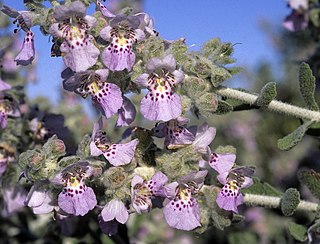
Quoya atriplicina, commonly known as saltbush foxglove, is a flowering plant in the mint family Lamiaceae and is endemic to Western Australia. It is a bushy shrub with its branches and leaves densely covered with a layer of hairs, giving them a greyish appearance. The leaves are broad-elliptic to almost circular in shape and the tube-shaped flowers are pink with purple spots inside.
Dasymalla chorisepala is a flowering plant in the mint family Lamiaceae and is endemic to Western Australia and the Northern Territory. It is a small shrub with its branches and leaves densely covered with hairs. The leaves are stalkless, egg-shaped and covered with yellowish hairs while the flowers are small, tube-shaped and white.
Dasymalla glutinosa is a flowering plant in the mint family Lamiaceae and is endemic to Western Australia. It is a spreading, sticky shrub with glabrous branches, egg-shaped, stalkless leaves and small, white or cream-coloured, tube-shaped flowers.

Pityrodia loricata is a flowering plant in the mint family Lamiaceae and is endemic to Australia. It is a dense, greyish, multi-stemmed shrub with whorled leaves, prominent sepals and pale, pinkish-white flowers. It is common in Western Australia and the Northern Territory and there is a single record from South Australia.

Muniria quadrangulata is a flowering plant in the mint family Lamiaceae and is endemic to Arnhem Land in the Northern Territory. It is a shrub with its branches and leaves covered with a thick layer of woolly hairs and pale yellow flowers in groups of up to nine, surrounded by woolly hairs.

Pityrodia lepidota is a flowering plant in the mint family Lamiaceae and is endemic to the south-west of Western Australia. It is a small, densely-branched shrub with small leaves and whitish, bell-shaped flowers. The entire plant, apart from the petals, is densely covered with small, circular scales.

Pityrodia byrnesii is a flowering plant in the mint family Lamiaceae and is endemic to Arnhem Land in the Northern Territory. It is a shrub with hairy, glandular stems, stalkless, flat leaves and fragrant, off-white, bell-like flowers with purple stripes inside the tube.
Muniria angustisepala is a flowering plant in the mint family Lamiaceae and is endemic to the Northern Territory. It is an erect shrub with softly hairy, warty leaves and pale yellow, woolly flowers.
Muniria lanceolata is a flowering plant in the mint family Lamiaceae and is endemic to Arnhem Land in the Northern Territory. It is a shrub with its branches and leaves densely covered with a layer of short, greyish, branched hairs and red flowers near the ends of the branches.
Muniria megalophylla is a flowering plant in the mint family Lamiaceae and is endemic to Arnhem Land in the Northern Territory. It is a shrub with its branches and leaves densely covered with a layer of short, greyish, branched hairs and small groups of reddish-pink flowers near the ends of the branches.
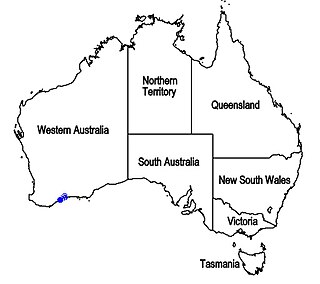
Hemiphora exserta is a flowering plant in the mint family Lamiaceae and is endemic to the south-west of Western Australia. It is a sprawling shrub with its branches densely covered with white, woolly hairs. Its leaves are rough and wrinkled and the flowers are deep pink or dark red, curved and tube-shaped with spreading petal lobes on the end.
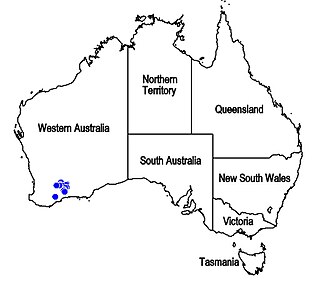
Hemiphora lanata is a flowering plant in the mint family Lamiaceae and is endemic to the south-west of Western Australia. It is a sprawling shrub with its branches and leaves densely covered with white, woolly hairs and with deep pink or dark red, curved, tube-shaped flowers with spreading petal lobes on the end. It is similar to Hemiphora exserta except for its cottony leaf-covering and its longer stamens.

Pityrodia gilruthiana is a flowering plant in the mint family Lamiaceae and is endemic to Arnhem Land in the Northern Territory. It is a dark green, spreading shrub with sticky, glandular branches and leaves and fragrant, off-white, bell-like flowers with purple stripes on the end.

Pityrodia hemigenioides is a flowering plant in the mint family Lamiaceae and is endemic to the south-west of Western Australia. It is a spreading shrub with densely hairy branches and leaves, and pale white flowers near the ends of the branches.

Pityrodia jamesii is a flowering plant in the mint family Lamiaceae and is endemic to Arnhem Land in the Northern Territory, Australia. It is a spreading shrub with hairy, yellowish brown stems, sticky, hairy, egg-shaped to lance-shaped leaves and white, bell-like flowers.

Pityrodia lanuginosa is a flowering plant in the mint family Lamiaceae and is endemic to Arnhem Land in the Northern Territory. It is a woolly, spreading shrub with its leaves arranged in four rows and off-white, bell-like flowers with dark purple streaks.
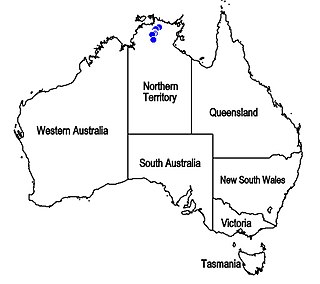
Pityrodia puberula is a flowering plant in the mint family Lamiaceae and is endemic to Arnhem Land in the Northern Territory. It is a straggling shrub with narrow, hairy leaves arranged in four rows and off-white, bell-like flowers with dark purple streaks.
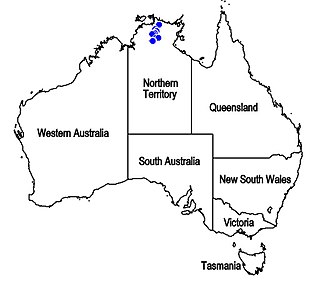
Pityrodia pungens is a flowering plant in the mint family Lamiaceae and is endemic to the northern part of the Northern Territory. It is an erect, spreading shrub with narrow, prickly leaves and off-white, bell-like flowers with dark purple streaks.
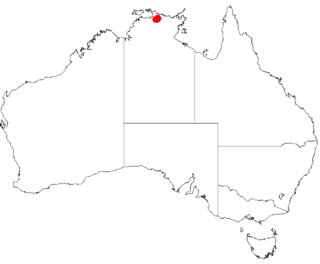
Pityrodia serrata is a species of flowering plant in the mint family Lamiaceae and is endemic to the northern part of the Northern Territory. It is an erect shrub with sharply-pointed, egg-shaped leaves with serrated edges, and off-white, bell-shaped flowers streaked with purple.















